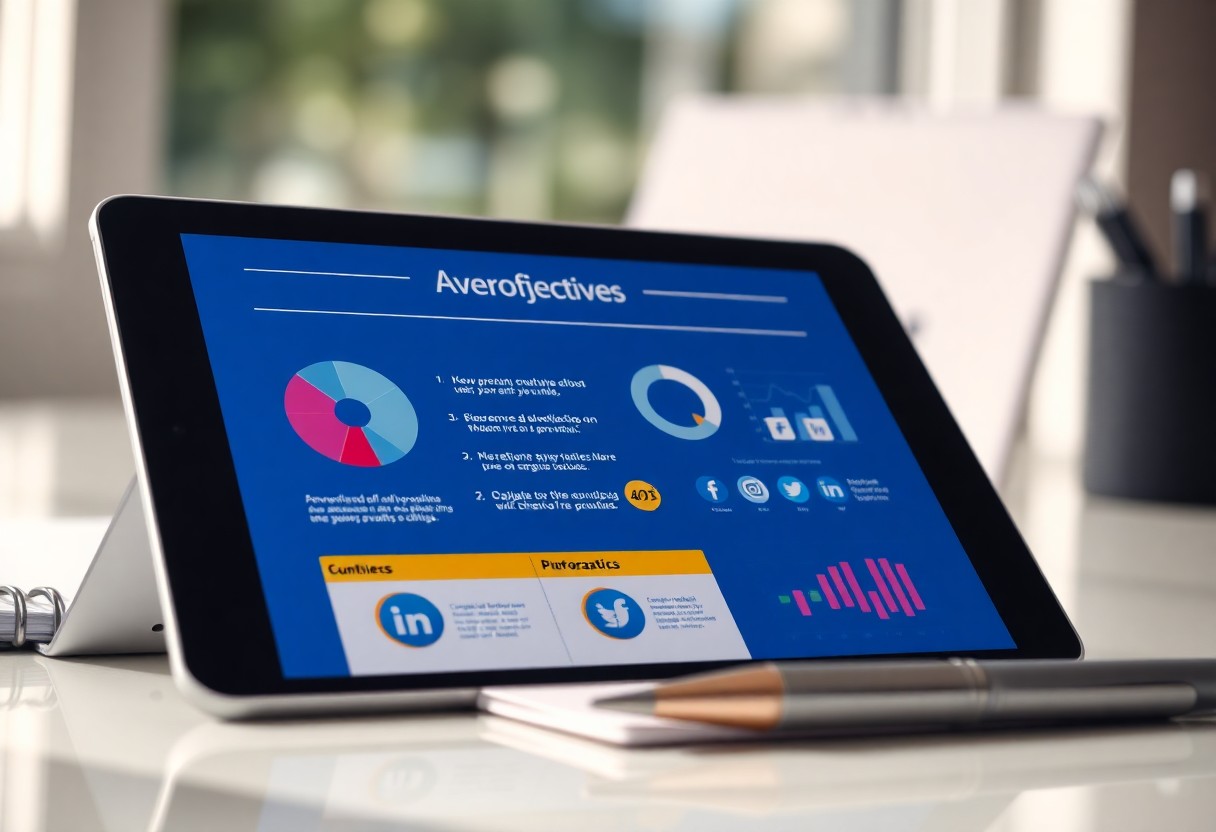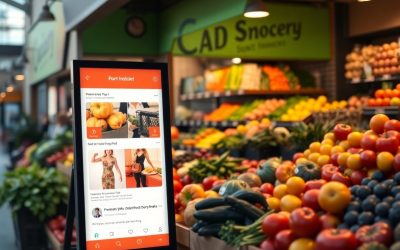With the ever-changing landscape of digital marketing, entering into paid social advertising can feel overwhelming. But don’t worry, you’re here to crush it! This step-by-step plan will guide you through crafting a successful advertising strategy that amplifies your brand and drives real results. From setting clear objectives to optimizing your campaigns, every section will propel you towards engagement and conversions. Let’s dive in and turn your social media presence into a powerhouse!
Key Takeaways:
- Define clear objectives and target audience to tailor your paid social advertising strategy effectively.
- Continually monitor and analyze campaign performance using relevant metrics to optimize and refine your approach.
- Leverage A/B testing to identify the most engaging creatives and ad placements for maximizing your return on investment.

Defining Your Advertising Objectives
Aligning Objectives with Business Goals
Your advertising objectives should pull double duty—serving both immediate marketing needs and the broader business direction. Instead of just aiming for likes or impressions, think about how your paid social campaigns can drive actual results for your company. For example, if your business aims to boost annual revenue by 20%, your advertising strategy needs to translate that goal into actionable metrics. Set clear objectives like increasing website visits by 30% in the next quarter or generating 200 qualified leads through social channels, making sure each target links back to your overarching business goals.
As you define these objectives, consider the journey of your customer from awareness to conversion. Objectives should reflect each stage of that journey. While one campaign might focus on raising brand awareness in new audiences, another should zero in on nurturing leads through retargeting strategies. This alignment not only keeps your team focused but also ensures that your spending on paid ads effectively contributes to the profitability of your business.
Measuring Success: Key Performance Indicators
Selecting the right Key Performance Indicators (KPIs) is like setting up a GPS for your paid social efforts. Without the right directions, you risk veering off course. Track metrics such as click-through rates (CTR), conversion rates, and return on ad spend (ROAS) to gauge your campaign effectiveness. For instance, if your ad has a CTR of 2% but a conversion rate of only 1%, it indicates that while people are interested enough to click, something in your landing page or offer isn’t compelling enough. This discrepancy should inform your adjustments moving forward.
To further refine your approach, break down your KPIs by demographic segments or ad placements. This granularity helps you understand where you’re winning and where there’s room for improvement. If a specific age group is converting significantly better than others, you might consider allocating more budget towards that segment, optimizing it further for even greater gains.
Integrating qualitative and quantitative data will deepen your understanding of success metrics. Use A/B testing to keep fine-tuning your ads and landing pages based on the data you collect. Combining hard numbers with consumer feedback can reveal a wealth of insights that lead you to innovate beyond the usual parameters. Think of it this way: every bit of data is a piece of art waiting to be crafted into a masterpiece of social advertising. Keep watching, keep learning, and keep adapting.
Crafting Target Audience Profiles
Understanding who your audience is should be at the forefront of your digital marketing strategy. With paid social advertising, the key to success hinges on how well you craft your target audience profiles. You don’t just throw ads out there and hope for the best. Think of your audience as unique individuals with distinct motivations, interests, and behaviors. Through careful segmentation, you can tailor your advertisements to speak directly to them, enhancing engagement and elevating your return on ad spend (ROAS).
Utilizing Data-Driven Insights for Audience Segmentation
By diving deep into available data, you can uncover valuable insights to inform your audience segmentation. Platforms like Facebook and Instagram provide robust analytics that give you a snapshot of your followers’ demographics, interests, and online behaviors. For instance, if your analysis reveals that a considerable portion of your audience lives in urban areas and frequently engages with sustainable products, you can capitalize on this information. Design targeted campaigns to resonate with their values and lifestyle, enhancing the likelihood of conversion.
Look beyond just basic metrics; tools such as Google Analytics or third-party research can reveal psychographic data as well. Identify the motivations driving your audience’s behaviors to create more tailored ads. If your ideal audience gravitates towards eco-friendly brands, running ads with an emphasis on sustainability will speak directly to their values. By continually refining your segmentation based on actionable insights, you avoid wasteful spending and can allocate your budget toward the most receptive audiences.
Building Buyer Personas for Precision Targeting
Buyer personas are like detailed maps of your ideal customers, offering insight into who they are, what they want, and how they make buying decisions. Start by collecting qualitative and quantitative data through surveys, interviews, and market research. Say you run a fitness brand; you might create personas for a busy professional seeking quick workout solutions and a college student looking for affordable nutrition options. These personas not only guide your ad content but also help position your brand in a way that resonates on a personal level. Your audience wants to feel understood, and accurately depicting these personas in your advertising strategy builds trust and loyalty.
These personas act as living documents. Regularly update and recalibrate them based on new insights or changes in your audience’s behavior. If recent trends show a growing interest in home workouts post-pandemic, consider adjusting your fitness personas accordingly. By investing time in crafting and refining buyer personas, you create an arsenal of precision targeting that will amplify your advertising efforts to unprecedented heights.
Selecting the Right Platforms for Your Campaign
Analyzing Platform Demographics and Ad Formats
Understanding the demographics of different social media platforms is non-negotiable if you want your paid advertising to hit the mark. For example, Facebook is a powerhouse with over 2.8 billion monthly active users, making it a go-to for brands targeting a wide audience. However, if you aim to connect with Gen Z, TikTok should be your playground, boasting an impressive 60% user base aged 16-24. Tailor your ad formats to fit each platform; while short, snappy videos thrive on TikTok, eye-catching images or carousel ads work wonders on Instagram. Analyze these nuances to ensure your message resonates with the right eyes.
You will also want to keep ad formats in mind, as each platform often has unique styles that can dramatically affect engagement rates. For instance, LinkedIn’s sponsored content typically appeals to professionals and B2B companies, while Snapchat ads are often more playful and interactive, targeting a younger demographic. Prioritizing platforms that align with your product or service can drastically enhance your ROI, so dig into those analytics, and make data-driven decisions.
Matching Brand Personality with Platform Characteristics
Your brand personality should effortlessly mesh with the platform you choose to advertise on. If you’re a fun, quirky brand, positioning yourself on Pinterest for infographics or whimsical visuals may not inspire the connection you desire. Instead, platforms like Instagram or TikTok, where creativity shines, would offer a more authentic space for you to express your culture. While sleek and professional brands might find a happy home on LinkedIn, those chasing a youthful, energetic vibe will tend to thrive on platforms that encourage spontaneity and creativity.
Aligning your brand’s voice and tone with platform characteristics results in a more coherent narrative that feels natural to your audience. For instance, if your brand’s identity centers on luxury and sophistication, a platform like Instagram allows you to showcase high-quality visuals and polished messaging. Conversely, B2C brands focused on interaction might excel on platforms like Twitter or TikTok, where engaging content and personal interactions are the order of the day. Your aim is clear: choose where you highlight your brand character so it captivates your audience and spurs engagement.
Diving deeper into brand personality, consider how each platform’s culture can amplify or dilute your message. A company focused on sustainability might receive mixed results on platforms typically used for frivolous or non-environmental messages. Therefore, honing in on where your brand ethos resonates best will not only enhance audience engagement but can also foster a community around shared values and interests. When you align your messaging with a platform that reflects your brand’s heart, the fruits of your campaign will be unmistakably sweet.
Creating Compelling Ad Content
The Art of Storytelling in Paid Social Ads
Every great ad tells a story that resonates with its audience. Your objective should revolve around crafting a narrative that not only highlights your product but also evokes emotions and creates a connection. Imagine this: instead of merely showcasing a pair of run-of-the-mill sneakers, you could share a story about an everyday person training for a marathon, illustrating their struggles and triumphs along the journey. This narrative builds relatability and drives your audience to visualize themselves engaging with your brand, making the purchase feel less transactional and more personal.
Your storytelling angle can vary based on the platform and audience. For instance, Instagram users may engage better with visually-driven mini-stories told through carousel ads, while a more text-heavy narrative might perform better on platforms like Facebook. Prioritize brevity and relevance; you want your ad to be scroll-stopping and memorable, encouraging users to keep watching until the end. Always ask yourself how your story reflects your brand values and what lessons or feelings you want your audience to walk away with.
Visual Strategies that Capture Attention
Visuals are the beating heart of your ad campaign. An eye-catching image or video can convey a message faster than text ever could. Consider bold colors, striking contrasts, or even unexpected visuals that challenge norms within your industry. For instance, brands like Nike are known for their compelling use of powerful imagery that inspires and motivates, illuminating their mission far beyond just selling shoes. The aim is to stand out in a crowded feed, so don’t shy away from experimenting with the unconventional.
Infographics or short videos can also break down complex messages into digestible visual elements, making it easier for your audience to engage quickly. The right visual strategy doesn’t just enhance your storytelling; it amplifies it. Think about how you can use imagery or motion to portray your product’s benefits effectively. Utilizing customer-generated content or testimonials in your visuals can add authenticity too, making your ads feel more trustworthy. Don’t forget, in an environment where thumb-stopping content is king, your visuals need to hold value, intrigue, and a dash of surprise.




0 Comments